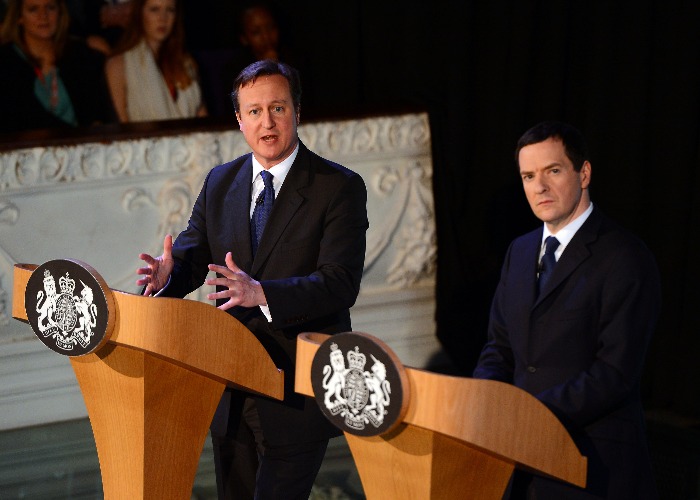Which benefits will the Government cut?

IFS outlines options open to the Government as it searches for £12 billion of savings.
Scrapping Child Benefit and means-testing disability benefits are among the options open to the Government in order to meet its commitment to find £12 billion of benefit cuts, according to research from the Institute of Fiscal Studies (IFS)
Before the election, the Conservative Party manifesto included a commitment to make a further £12 billion of cuts to the amount we spend on benefits. However, no details were provided on exactly where those cuts would be made.
Now the IFS has published an observation paper, looking at the sorts of options the Government has at its disposal in order to make those savings.
What’s already being cut?
The IFS suggested that specific benefits policies in the Conservative manifesto “make a small step” towards that £12 billion total.
For example, freezing most working-age benefits and tax credit for two years will cut spending by £1 billion under current inflation forecasts. Similarly, reducing the benefits cap from £26,000 and £23,000 per year would save £100 million, as would removing Housing Benefit from 18-21 year old jobseekers.
That leaves at least another £10.5 billion of savings to find.
What’s more, around 40% of welfare spending is protected from cuts, in theory at least, by promises made in the Conservative manifesto. This includes protecting State Pensions and universal pensioner benefits, which account for £95 billion of annual spending.
So where is the Government likely to look? The IFS has picked out a number of options the Government may be considering.
Find savings of your own with loveMONEY's Track tool
Benefits for families with children
In the last Government, Child Benefit moved from being a universal benefit to a mean-tested one. Families where one individual has an income of £60,000 lost it altogether, while those families with one person earning between £50,000 and £60,000 receive a reduced amount.
However, further cuts may help the Government hit its £12 billion target. The IFS suggested one option would be to abolish Child Benefit entirely, instead increasing the child element of Child Tax Credit (and Universal Credit, when it is fully implemented) correspondingly, so that low-income families can still claim their means-tested entitlements.
This would be a big cut, reducing spending by around £5 billion. The majority of families with children would lose at least £1,000 per year, with only the entitlements of the lowest-income third protected. It would also involve an expansion of means-testing.
Alternatively, the Government could cut tax credits, which would take money away from a lower-income group of families. Reducing the per-child element to its real, CPI-adjusted 2003/4 level would reduce entitlements for 3.7 million families by an average of £1,400 per year, cutting spending by £5 billion. According to the IFS, this would increase relative child poverty by about 300,000 (or 2.5%)
Other options include reducing the Child Benefit payable for the first child in the family by £7 per week, which would save £2.5 billion a year and mean a flat cut of about £360 per year for all families receiving the benefit. Or the Government could abolish Child Benefit for the third and subsequent children, which would save £1 billion per year.
Housing Benefit
Local Housing Allowance (LHA) is a benefit that covers a certain percentage of the tenant’s rent when they rent privately. The amount you can claim depends on where you live. Local limits were based on the cheapest 50% of properties in an area, but the Coalition cut that to 30%. Dropping it to the cheapest 20% would reduce spending by £400 million a year according to the IFS.
An alternative would be to make all claimants pay some share of the rent. Introducing a ‘co-payment’ of 10% would cut spending by £900 million. Expanding this to all social tenants, and reducing Housing Benefit by a further 10% for those already affected by the ‘bedroom tax’, would cut spending by about £1.6 billion.
If the Government expanded its pledge to remove Housing Benefit from 18-21 year olds on Jobseeker’s Allowance to all those under the age of 25, it would cut spending by a further £1.5 billion. This would be a big cut for around 300,000 claimants, averaging about £5,000 per year. If the Government chose to exempt those with dependent children, it would halve the saving.
Disability, incapacity and carers’ benefits
Benefits for those with disabilities or who care for them are generally not means-tested.
The Government could change this to help plug its £12 billion hole, though his would be a tax rise rather than a benefit cut.
By taxing the Disability Living Allowance, and its replacement Personal Independence Payments, the Government would boost revenues by £900 million. Taxing Attendance Allowance (which goes to pensioners only) would increase revenues by a further £600 million.
Finding the right balance
The Government clearly has a difficult balancing act to find the £12 billion savings.
In the words of the IFS: “Saving money while only affecting better-off claimants will tend to weaken work incentives. Saving money while protecting or strengthening work incentives tends to mean hitting some of the poorest in society and hence increasing poverty. We should soon find out the balance that the new Government chooses to strike.”
So what would you do? Would you make any of the cuts detailed above? Or would you look elsewhere for the savings? Let us know your thoughts in the comments box below.
Find savings of your own with loveMONEY's Track tool
More from loveMONEY:
Comments
Be the first to comment
Do you want to comment on this article? You need to be signed in for this feature